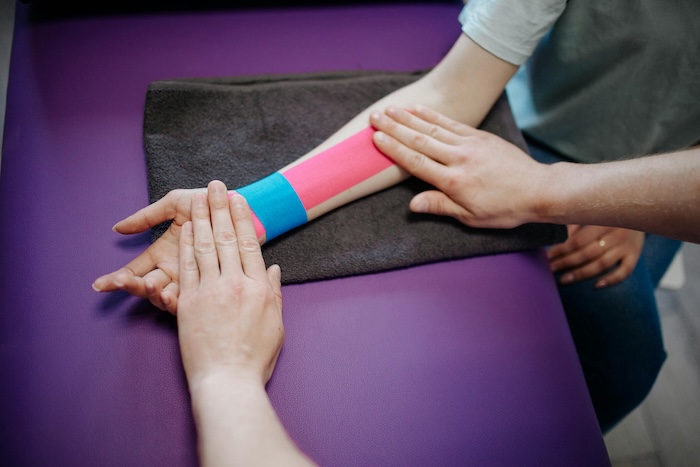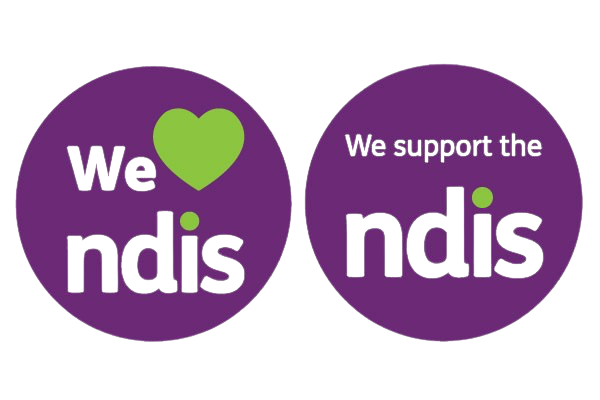Have you recently twisted an ankle? You may have pushed too hard and strained your muscles while exercising or hurt yourself playing your favourite sport.
In Australia, up to 19% of sporting participants in 2022 experienced an injury. It’s clear that, when it comes to pushing our bodies to the limit, injuries are incredibly common.
Whatever the cause, your injury now likely needs care. But what should your next step be? Strapping your injury with tape may be what you need to help your recovery.
In this article, we’ll explain how taping works and the various benefits it may offer. Physiotherapy in Canberra is also available to help you determine whether taping is the most appropriate treatment for you.
For personalised advice or tailored physiotherapy care, contact our team at Active Recovery today.
How Does Taping Work?

Physiotherapists utilise their in-depth knowledge of the human body to provide personalised care. This often involves manual therapy and exercises. However, taping is also a common practice.
Taping an injury requires elastic, adhesive tape. This straps your injury, potentially providing additional support that may help manage your recovery and reduce pain.
Your physiotherapist may apply this tape in two different ways, using a rigid or flexible technique.
Rigid Taping
Rigid taping is designed to be stiff and strong, wrapped around the joint or injured area in a specific way. This may help prevent movement and provide the additional support a fragile limb may need.
Most often, this type of taping is used for wrist or ankle injuries. However, it may also help prevent future injuries.
Flexible Taping
Flexible taping, also known as kinesiology taping, is designed to allow freedom of movement. In some cases, your physiotherapist may employ a special kind of tape that is extra elastic.
This may offer additional support, but still allow you to pursue the activities you love. Most often this type of taping is used on muscle and joint injuries, such as tennis elbow or shoulder pain.
The Potential Benefits of Taping Injuries
Taping may do more than just support an injury. When applied correctly, it may have several benefits, such as:
1. Reduced Swelling
While offering support, flexible taping may also help manage swelling. By allowing movement, this method potentially encourages better blood circulation. Increased blood circulation may improve swelling and support a faster recovery.
2. Pain Management
By providing additional support, taping may help alleviate your pain. With the right technique, it may encourage your muscles to relax and reduce tension. In turn, this may reduce your discomfort.
3. Posture Correction
Taping may even help alleviate back pain and improve your posture. The additional support may increase your awareness of how you stand or move. This increased awareness may make it easier to correct your posture, thereby alleviating pressure on your body.
4. Injury Prevention
Keeping your joints and muscles stable with taping may also help prevent injuries. The taping aims to keep your joints and muscles secure, which may prevent them from becoming overextended.
Likewise, with fewer injuries and additional support, your athletic performance may improve.
Why You May Need a Physiotherapist

While taping may be beneficial, doing it the wrong way could cause more harm than good.
A physiotherapist understands how your muscles interact. This means that they use specific techniques that may guide, support and control your muscle movements.
Attempting to tape your own injuries without this knowledge may result in a lack of support. Likewise, it could potentially be even more detrimental, increasing your risk of worsening your injury.
At Active Recovery, we take your concerns seriously and work to provide the tools you need to recover.
We’ll assess your injury and aim to identify which taping method may be best for you. We may then educate you on how to tape your own injury. With this guidance, you may be able to keep supporting your injury at home.
Care From Active Recovery
At Active Recovery, our team is dedicated to your care. We offer personalised support that puts you first and aim to help you navigate the complexities of health, injury and recovery.
With our biopsychosocial framework, we take your needs, goals and history into account to deliver a tailored plan. Whether you’re excited to get started or worried about your next steps, our friendly team will be here for you. Book an appointment today.


